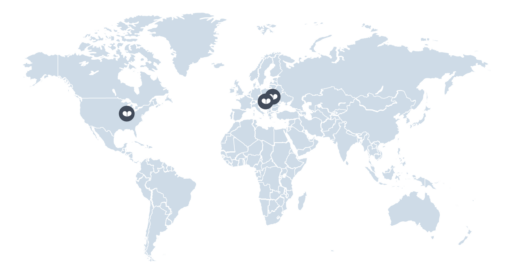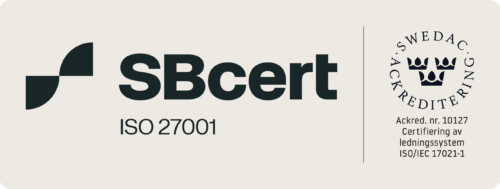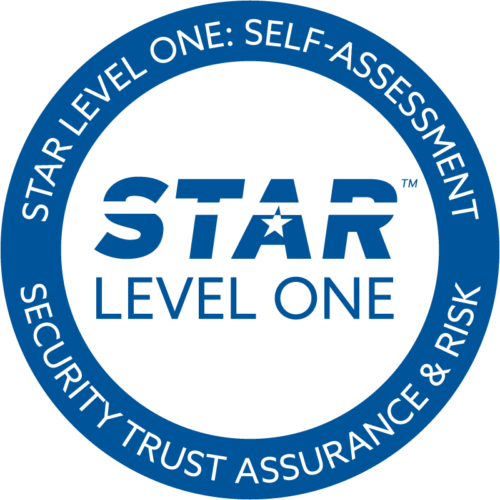Guide to Resource Planning: A Key to Optimize Your Marketing
Like with all planning, the success of a project manager hinges on meticulous and strategic resource planning. It’s the invisible thread that weaves together creativity, strategy, execution, and results.
But how to tackle resource planning? This and more questions will be uncovered in this article.
What is Resource Planning?
Resource planning is a strategic process that involves identifying, allocating, and managing the resources needed to achieve specific goals within an organization. These resources can include human capital, financial assets, technology, materials, and more.
5 Benefits of Resource Planning
Resource planning is a cornerstone of successful project management, enabling project managers to strategically allocate and optimize resources.
This process, facilitated by resource planning tools and software:
- ensures effective strategic alignment and resource utilization,
- gives agility and flexibility,
- and maximizes project collaboration,
- improves the return on investment score.
As you can see, such a resource project plan harmonizes diverse elements to complete projects efficiently and supports robust portfolio management across multiple endeavors.
But one step at a time – let’s take a closer look at these benefits.
Strategic Alignment
Resource capacity planning acts as a bridge between organizational goals and the resources needed to achieve them. By aligning resources with objectives, it ensures that different projects and every effort is directed toward the desired outcomes.
This alignment creates a synergy where resources are not just used but optimized. It eliminates confusion and misdirection, leading to a more focused and effective approach. Strategic alignment through resource planning is like having a compass that always points toward success.
Optimized Utilization
Understanding the availability and potential of resources allows for their optimal utilization. Resource planning ensures that no resource is underutilized or wasted.
It’s like tuning an engine to its optimal performance, where every part works in harmony to create maximum output. This optimization leads to efficiency, where resources are used to their fullest extent without unnecessary expenditure. It’s a balance that requires insight, foresight, and strategic thinking.
Enhanced Collaboration
Collaboration is the glue that holds a team together, and resource planning fosters this collaboration. By creating a clear roadmap, it ensures that everyone knows their role and how it fits into the bigger picture.
This is similar to having a well-rehearsed orchestra where every musician knows their part and how it contributes to the symphony. This clarity enhances collaboration, leading to a more cohesive and effective team. Enhanced collaboration through resource planning is not just about working together; it’s about creating a unified force that drives success.
Agility and Flexibility
Agility is a vital quality in every resource management plan. Resource planning software provides the flexibility to adapt to changes without losing sight of the goals.
This agility allows project teams to navigate the turbulent waters of the entire project, seizing opportunities and mitigating risks. Therefore, agility and flexibility in resource planning are about thriving in a dynamic world.
Improved ROI
Return on investment is a critical measure of success, and resource planning plays a pivotal role in enhancing ROI. By aligning resources with goals and monitoring performance, it ensures that every dollar spent contributes to the bottom line.
This calibration leads to informed decisions that boost ROI, turning resources into value. Improved ROI through resource planning is all about creating tangible and intangible value that resonates with success.

4 Challenges of Resource Planning
However, there are also some challenges related to efficient project resource planning that project managers need to understand.
To complete a project, the ability to overcome difficulties must be proven. And it’s better if you know what you are fighting with.
Conflicting Priorities
Different departments or team members may have conflicting priorities. Balancing these conflicting needs can be like juggling balls, where a slight misstep can lead to chaos.
Project resource planning must navigate these conflicts, creating a balance that satisfies diverse needs without compromising the overall objectives. It’s a delicate act that requires diplomacy, negotiation, and strategic thinking.
However, conflicting priorities are opportunities to understand each other and create harmony and the right resource planning.
Limited Resources
Resource availability is often limited, while demands are high.
Managing these limited resources to meet project requirements can be like solving a complex puzzle where every piece must fit perfectly. Such resource planning in project management must find creative ways to stretch resources without breaking them, maximizing impact without sacrificing quality.
It’s a challenge that involves innovation, creativity, and a deep understanding of the resources and their potential. Limited resources in multiple projects are also opportunities that can lead to optimization in the use of assets.
Rapid Changes
The business environment is dynamic, and rapid changes are on a daily basis. Adapting to these changes without losing sight of long-term goals can be… well, hard.
Therefore, create and use resource planning that is agile and flexible to adapt to changes with grace and wisdom. It’s a challenge that requires resilience, foresight, and a willingness to learn and grow.
Complexity of Integration
Integrating various types of resources into a cohesive plan can also be a problem.
This complexity requires an understanding of each resource’s characteristics and how they interact. It’s a challenge that requires insight, expertise, and a holistic approach.
Resource requirements can be different, but if you understand, it will give you a chance to integrate them well.
Effective Resource Planning: A Step-by-Step Guide
Now, let’s focus on our nail of the show.
As a resource manager, you are probably interested in how to effectively plan your available resources. We won’t be using the usual spreadsheets or hand-made resource schedules here.
First, we will show you what steps you should focus on, and then we will present a resource planning system that will transform your work.
So, meet our ultimate guide to resource planning.
#1 Assessment
As assessment in resource planning is a matter of understanding the essence of resources, this phase is like taking a snapshot of your current resources. It involves evaluating what you have, understanding its potential and limitations, and identifying the gaps that need to be filled.
It’s a foundational step that sets the stage for the entire resource planning and management process. Without a clear assessment, planning can become a guessing game, leading to missteps and missed opportunities.
#2 Goal Setting
Goal setting is the compass that guides resource planning. It involves defining clear, measurable, and achievable goals that align with the organization’s overall objectives.
These project goals become the benchmarks against which progress is measured, and success is evaluated. Goal setting in resource planning is not just about ambition; it’s about creating a clear and compelling vision that inspires action.
#3 Strategic Allocation
As a resource planner, you also need to do a strategic allocation for your new project. It involves putting your resources in the entire project schedule, considering both short-term and long-term needs.
This allocation requires a deep understanding of the goals, the resources, and the landscape in which you operate. Such resource forecasting demands assessing the project’s specific requirements against the availability of resources.
Thanks to aligning the right resource with the right task, you ensure that each element of your project contributes optimally, facilitating effective progress toward short-term milestones while also positioning your endeavor for long-term success.
#4 Implementation
Implementation is where planning meets reality.
It’s a phase where vision becomes a reality, and plans become actions.
Project managers use resource planning tools and techniques to translate strategic resource allocation into practical tasks. Proper resource leveling and smoothing are crucial during this stage to avoid resource conflicts.
The success of project-based initiatives depends on executing tasks according to the project scope, timeline, and goals, ensuring efficient resource management throughout the project.
#5 Continuous Monitoring and Adjustment
Resource planning is the process that also contains continuous monitoring and adjustment.
This continuous monitoring ensures that the plan stays aligned with the project based goals, making necessary adjustments as needed. It’s a dynamic process that requires vigilance, responsiveness, and a willingness to learn and adapt.
Whether your project budget is small or large, you absolutely must not forget this phase, so take it into account.
#6 Evaluation and Learning
Last but not least – Evaluation.
It involves looking back at the overall project timeline, understanding what worked and what didn’t, and using these insights for future planning.
By analyzing the effectiveness of your resource planning project management, you refine your approach, adapting strategies based on resource constraints, project requirements, and lessons learned.
This evaluation propels continuous learning, transforming each experience into a stepping stone toward achieving even greater project success.

Marmind – Best Resource Planning Tool
Marmind is a cutting-edge resource management software designed to streamline and enhance resource planning, particularly in the marketing domain.
With it, you can store and manage all of your digital assets in one place without having to use multiple file sharing apps. As well as storing files, using tags for organization, comparing versions, and leaving comments, you can collaborate effectively with your colleagues.
Moreover, it compiles performance data into a central dashboard, empowering users to define KPIs, track campaign results, and maintain budget control.
This tool paves the way for cohesive, successful marketing endeavors.
How Marmind Can Help With Resource Planning
Here’s how Marmind can be a game-changer in resource planning:
Unified Platform
This resource management tool offers a unified platform that brings together all aspects of resource planning. Whether it’s human resources, budgets, or technology, Marmind provides a comprehensive view, eliminating silos and enhancing collaboration.
Intelligent Allocation
Marmind’s intelligent algorithms help in allocating resources where they will have the most impact. This intelligent allocation leads to optimized utilization, ensuring that resources are used effectively and efficiently.
Real-time Monitoring
It offers real-time insights into how resources are being used, allowing for quick adjustments and informed decisions. As real-time monitoring enhances agility, it allows you to adapt to changes without losing momentum.
Integration with Marketing Strategies
This marketing powerhouse integrates resource planning with marketing strategies. Such integration ensures that resource planning is not an isolated function but an integral part of the marketing strategy.
Customizable and Scalable
Marmind offers customization and scalability that can fit any organization’s unique needs and size. No matter if you’re a small business or a global enterprise – Marmind can be tailored to your specific needs, growing with you as you evolve.
Data-Driven Insights
This resource management tool leverages data to provide insights that guide resource planning. Data-driven insights lead to informed decisions, turning data into wisdom and wisdom into success.
Enhanced Collaboration and Communication
It fosters collaboration and communication by providing a platform where everyone can see and understand the resource plan. This transparency builds trust and alignment, creating a cohesive team that works towards common goals.
Compliance and Security
Marmind takes compliance and security seriously, ensuring that your resources are managed with integrity and protection.
Check our key features here.
Boost your Resource Management
The role of resource planning in successful project management is critical. As an invisible thread weaving creativity, strategy, and results, effective resource management fuels strategic alignment, maximizes utilization, enhances collaboration, and drives agility.
Amid challenges like conflicting priorities, limited resources, rapid changes, and integration complexity, a step-by-step approach emerges: assessment, goal setting, strategic allocation, implementation, continuous monitoring and adjustment, and evaluation.
And this is where Marmind comes in.
This cutting-edge platform offers a unified, intelligent, real-time, and scalable solution that integrates seamlessly with marketing strategies, ensuring data-driven insights, enhanced collaboration, and unwavering compliance – a vital arsenal for modern resource planning.
Book a demo in a few simple steps.
FAQ: Resource Planning Process
Why is a resource planning crucial in project management?
Effective resource planning aligns resources with goals, optimizing utilization, enhancing collaboration, and ensuring agility. It’s the strategic bridge between strategy and execution, driving successful project outcomes.
How does resource planning address conflicting priorities?
Resource planning involves diplomatic negotiation, balancing diverse departmental needs without compromising overall objectives. It aims to harmonize conflicting priorities through strategic allocation and compromise.
How does resource planning adapt to rapid changes?
Resource planning thrives on agility and flexibility. It enables organizations to swiftly adjust plans to changing circumstances while staying focused on long-term goals, ensuring optimal resource allocation.
What benefits does a unified platform offer in resource planning?
A unified platform streamlines resource management by eliminating silos, enhancing collaboration, and providing real-time insights. It ensures seamless communication, transparency, and data-driven decision-making.














